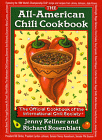
Brooks Team had 'True Grits' in Cooking Up Space Menu
By Rudy Purificato, Air Force Research Laboratory
BROOKS AIR FORCE BASE, Texas (AFPN) -- There weren't any 'happy meals' aboard Apollo moon missions, but astronauts were satisfied with what scientists here had cooked up in catering to their gastronomic tastes.
The U.S. Air Force School of Aerospace Medicine pioneered space food development that became one of the most important life-support contributions made to America's space program.
The culinary delights evaluated in the kitchen laboratories at Brooks Air Force Base, Texas, may not have given space travelers a more appetizing dining experience, but the cuisine had the right ingredients to keep them alive.
"I remember one general asking, 'Why can't they (astronauts) just eat beef jerky?" said retired Lt. Col. May O'Hara about the unusual space food proposal.
O'Hara, then the only female Air Force dietician involved in space food research, helped pioneer nutritional studies aimed at providing astronauts with balanced diets.
The school's space nutrition studies evolved from the aircrew in-flight feeding program begun in 1952 by the Aerospace Medical Research Laboratory at Wright-Patterson AFB, Ohio.
In 1960, NASA tasked the Air Force with developing space food for Project Mercury. The Wright-Patterson lab, in collaboration with the U.S. Army Natick Laboratories, developed bite-size food cubes and flexible food tubes containing semi-solids and liquids.
"An Air Force veterinarian at Natick wrote all the space food specifications. (In the beginning of the space program) there wasn't any space food," O'Hara said. "A totally new food system had to be developed."
NASA primarily relied on industry to create space foods and feeding systems that were evaluated and refined by Air Force researchers.
Concerned more with spacecraft payload and safety issues, NASA engineers initially imposed strict requirements on food researchers. Space food had to be lightweight, compact, easily eaten in zero gravity and last without refrigeration up to six months at 100 degrees Fahrenheit.
Early paste-like tube food and food cubes were both unpalatable and impractical. Astronauts and food test subjects disliked early experimental diets. After three days of eating this food, an Air Force volunteer quipped, "The chow was good, but I wanted something I could chew."
Astronauts Virgil 'Gus' Grissom and John Young disliked the food so much, they smuggled unauthorized corn beef sandwiches aboard their Mercury and Gemini flights, respectively.
Astronaut complaints led to improvements. Food tubes were replaced by freeze-dehydrated food reconstituted with water. Bite-size food cubes were coated with a more digestible gelatin to prevent crumbling.
Following the last Mercury mission in which L. Gordon Cooper became the first astronaut to dine on freeze-dehydrated food, NASA realized it needed more durable food for longer-duration Project Gemini and Apollo flights. The Wright-Patterson lab launched a three-year research and development program that included various diet and human metabolism in space studies.
In 1963, the Air Force transferred the space nutrition studies to Brooks. A school team of more than 40 medical, dietary and biological specialists continued these studies led by biochemist-nutritionist Dr. John Vanderveen.
An early NASA concern was weightlessness' effects on food.
"They were worried that food particles in zero gravity would float into spacecraft electronics, causing equipment damage," says Clarence Theis, a Systems Research Laboratories technician here and former space food research team member at the school of aerospace medicine.
"We were the first to test food in weightlessness," said O'Hara. Having observed weightlessness' minimal effects on eating, Vanderveen envisioned a feeding concept, later used on the moon, that was years ahead of its time.
Vanderveen came up with what later became the 'spoon-bowl' concept. Realizing cosmonauts had little difficulty eating food in space from cans using utensils, Vanderveen's idea became a reality during early Apollo missions. Astronauts ate rehydratable food from plastic pouches with spoons.
NASA's taste for investigating liquid food prevailed before Vanderveen's idea was adopted. NASA was concerned about astronaut weight loss, dehydration and loss of blood vessel fluids experienced during Mercury and Gemini missions.
"The first thing NASA wanted us to evaluate was a liquid concentration similar to Metrocal. Everybody who consumed it said it tasted terrible," Theis said.
School researchers relied on Lackland AFB, Texas, volunteers' feedback on foods and feeding systems to make improvements. Food experiments were conducted in altitude chambers that served as space cabin simulators. The longest experiment lasted 72 days.
"We tested a variety of liquid diets," O'Hara said. "They weren't too satisfying,"
But one liquid food evaluated became the official drink of astronauts and an early commercial success. Thesis said the scientists ran several tests on Tang -- an orange juice replacement.
Acceptability was the primary issue in developing space food.
"We felt a space diet ought to have a variety of foods that astronauts liked," O'Hara said. "It was really exciting to be on the frontier of space. We felt we were making history."
Courtesy of Air Force Materiel Command News Service
Air Force news story, dated August 20, 1999
| Bulletin Board | Keyword Search |
| Bookstore | Links |
| About Us | Recent Additions |

